Sommaire
Crises on Social Media: What Risks for What Narrative?
Regarding crises on social media, we now have a fully stabilized phenomenon with the number of cases now stable or even declining. The types of crises are also well known, but it was high time to define the potential risks for organizations. There are 65 such risks, grouped into 5 major sections.


Types of crisis
After going through different crisis types, I developed my own typology of crises.
As a reminder, we had the following table:
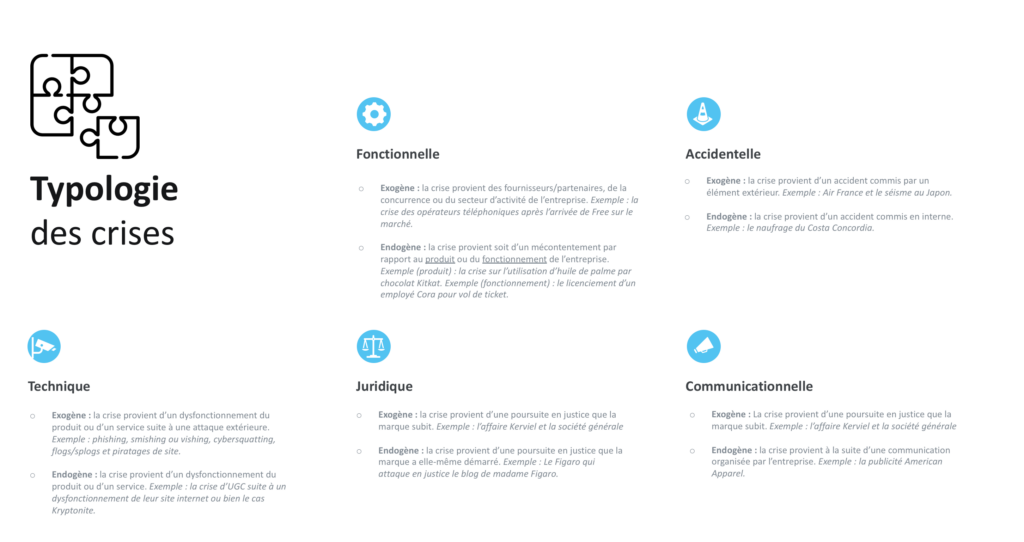
If we took most typologies, we could derive the following types of crises.

Towards a typology of risks
However, this typology is good for "classifying" tweets and has ontological value for that purpose. But it is not very useful when we want to operationalize it.
That's why I thought it useful to develop a second type of typology, which is a typology of risks and possible narratives.
1. Communication
The first major block is, of course, communication, which is by far the most important block.
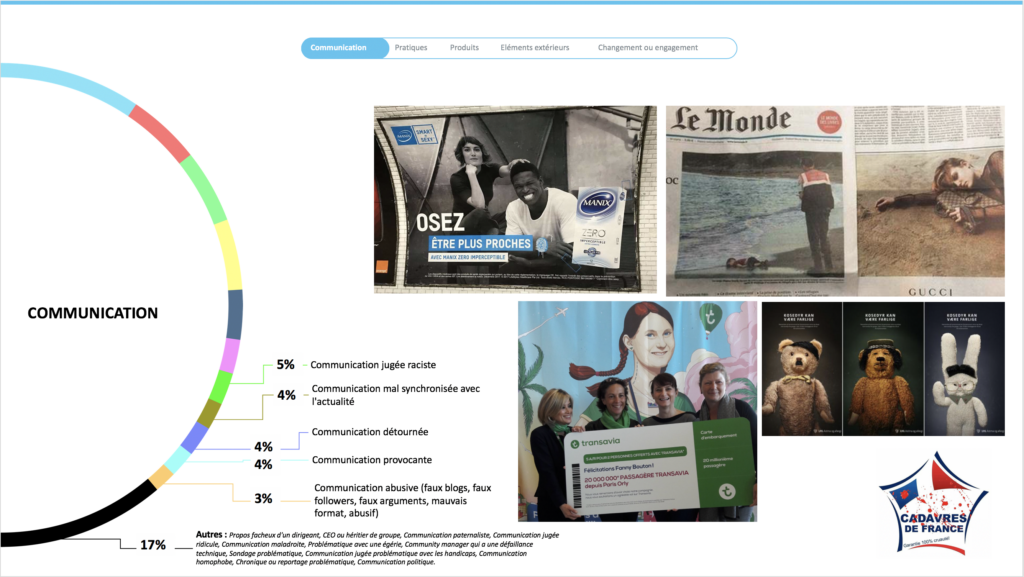

The first case is that of advertising considered sexist, with the example of FOREM publishing an advertising campaign that ignited Belgian social media.
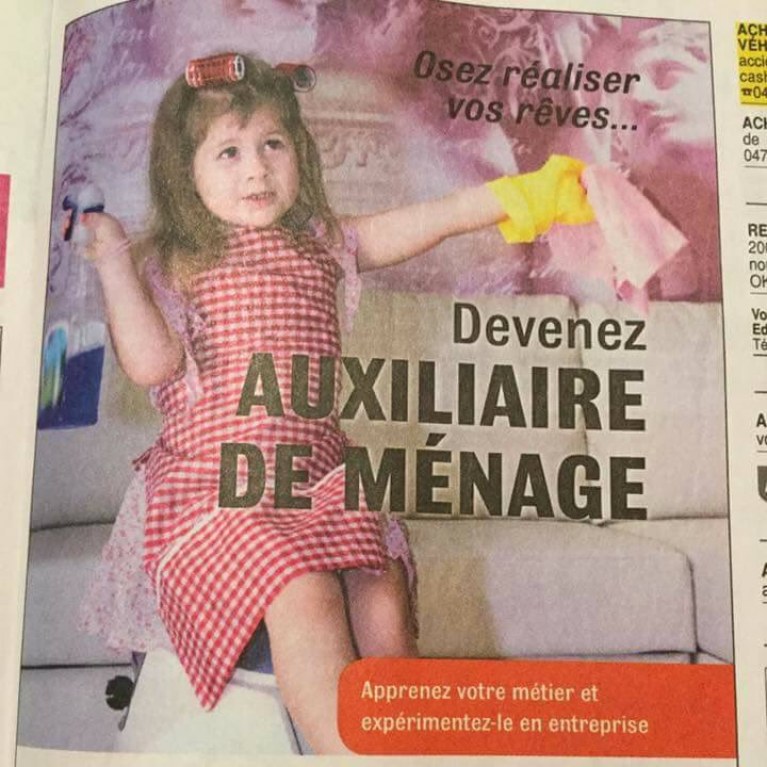
The poster heavily relied on stereotypes, especially in its illustrations for the opposite sex. Although the social media angle illustrated the articles on the topic, the number of tweets remained relatively measured and focused around the media.
Indecent communication is that which is deemed indecent. For instance, Pepsi launched a campaign in which a white model, Kendall Jenner, attempted to end violent protests with a can of Pepsi. In a context of police violence, and evoking an image that had resonated widely (a protest in Baton Rouge in 2016), the message was extremely poorly received and triggered a wave of tweets against Pepsi.

Non-responsible communication. For Mother's Day, the brand Desigual produced a video clip in Spain where a model of the brand simulated a pregnancy belly with a cushion before piercing condoms. The ad ended with "Happy Mother's Day." Another example is Poweo, which featured Chabal in an animated video where he stuck his fingers in an electrical socket.



Employees filmed or photographed engaging in bad behavior. In 2019, two Domino's Pizza employees filmed themselves putting boogers on various foods and uploaded the video to YouTube. Reactions were swift. The brand responded on Twitter, with its CEO addressing the issue.

Offensive communication for a religion, culture, or country. In 2016, Adidas made one of the biggest blunders of the year by failing to spell Colombia correctly in one of its ads. Instead of "Colombia," they wrote "Columbia."

Quickly attacked on social media, Adidas responded: "We value our partnership with the Colombian Football Federation and apologize for our mistake. We have removed these visuals and will install new posters soon."
The same scenario occurred for McDonald's, which made a huge blunder in Mexico by attacking a national monument: the tamales, stating they "belonged to the past." Mexican internet users did not appreciate this, and the brand had to apologize.

A detail in a communication. Such was the case for Kookaï, which launched a campaign themed around hell, featuring Catholic symbols, including the Sacred Heart of Jesus (a heart with thorns), which symbolized Jesus' love and created a scandal among Catholics.

Communication deemed racist. In the Paris metro, Manix ran an ad featuring a white woman with a Black man.

Misaligned communication with current events. A bad coincidence put Gucci in the spotlight. As "Le Monde" published a photo of young Aylan, a Syrian refugee child who drowned on a beach, an ad for Gucci also featuring a beach was placed nearby.
This situation created an awkward situation for "Le Monde," which didn't intend for the Gucci brand to be perceived that way.

Other examples include: abusive communication (fake blogs, fake followers, false arguments, inappropriate formats, abusive content) - distorted communication - provocative communication - offensive remarks from a leader, CEO, or heir of a group - paternalistic communication - communication deemed ridiculous - awkward communication - issues with brand ambassadors - community manager technical failure - problematic survey - communication deemed problematic concerning disabilities - homophobic communication - problematic broadcast or report - political communication.
2. Practices
The second major block is the practices of organizations that raise concerns.
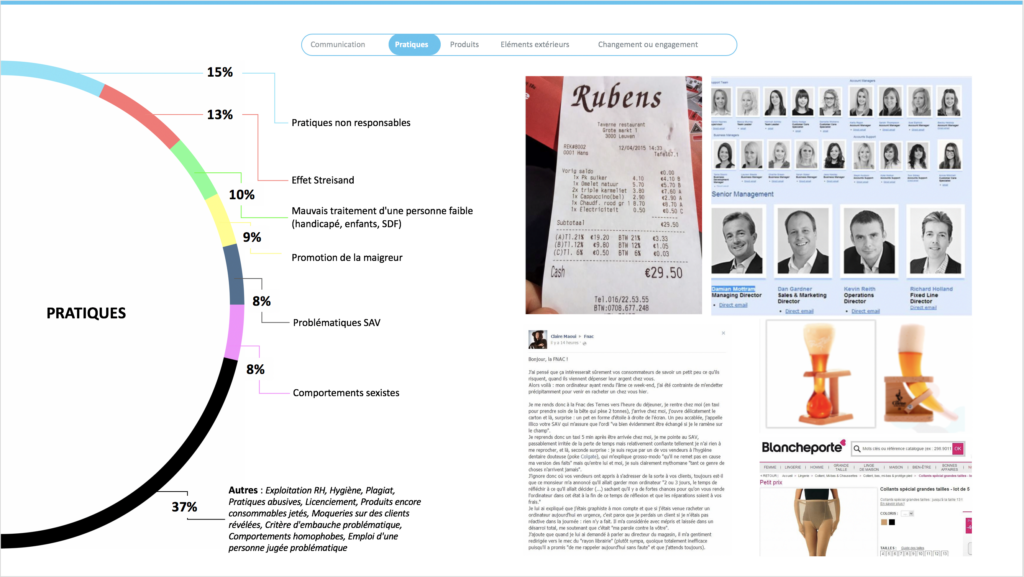
The most common issue is irresponsible practices. A café in Louvain became controversial after a tweet from a customer showing a "bottle warmer" category was made public.
This practice was strongly criticized on Twitter, and the echo reached most media outlets.
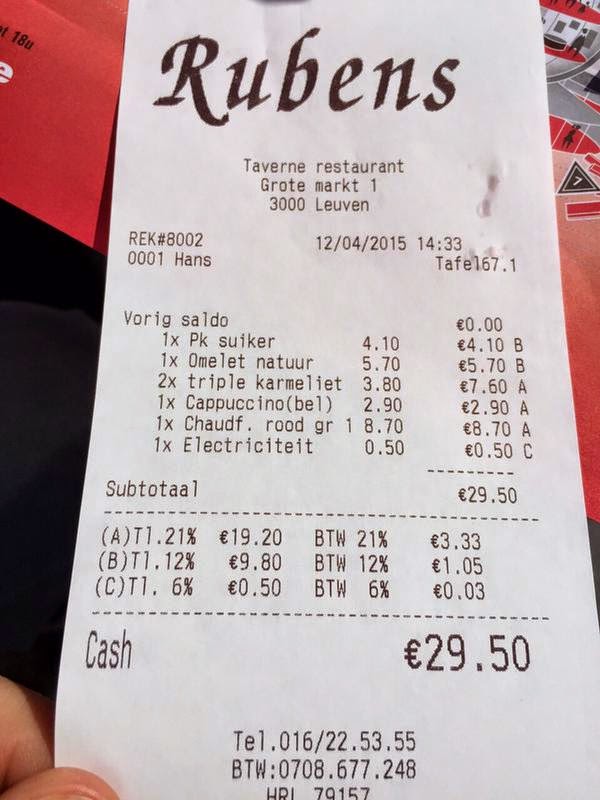
The Streisand Effect. The Streisand Effect is a media phenomenon in which the desire to suppress information that one would prefer to keep hidden — be it rumors or verified facts — leads to the opposite result.
The Kwak beer brand sued the Walloon beer "Corne du bois des pendus," accusing it of similarities in glass design. The owners of the Walloon beer then turned to the media to appeal for donations, as they could no longer bear the legal costs. With the similarities not being obvious, a bad buzz ensued, and many negative comments were posted on Kwak's Facebook page.


Mistreated weak individual. A typical case of mistreatment of a homeless person, someone with disabilities, or others. For instance, when the Belgian supermarket chain Delhaize deployed anti-homeless devices.

Promoting thinness. Several Twitter users posted photos of a mannequin at the La Perla lingerie store in New York, deemed too thin. The issue quickly gained media attention, prompting the brand to remove the mannequins from all their stores.
Problematic after-sales service. A consumer complained about FNAC's after-sales service through a post.
Surprisingly, this gained considerable visibility online, garnering many likes (+15,000).
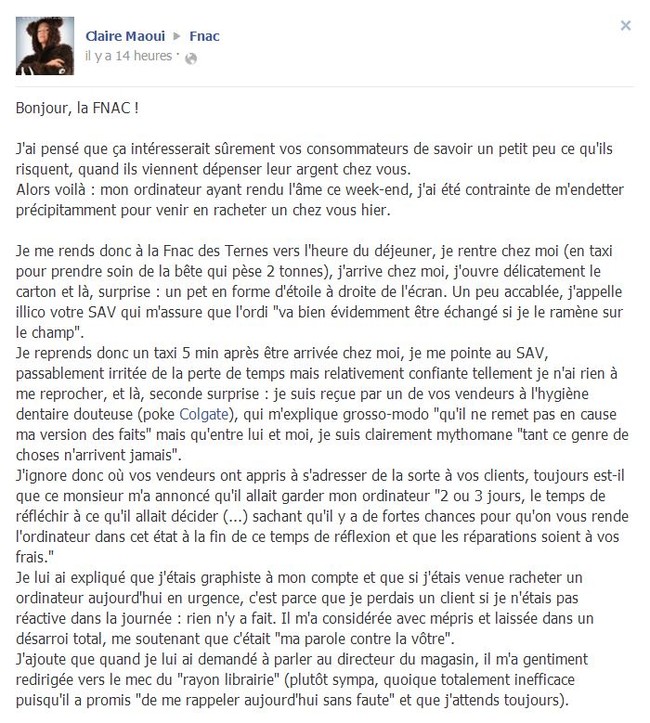
Sexist behavior. Like this company that introduced us to the concept of the glass ceiling for organizations.

Other cases include: HR exploitation - hygiene issues - plagiarism - abusive practices - layoffs - still consumable products thrown away - mocked customers revealed - problematic hiring criteria - homophobic behavior - employing someone deemed problematic.
3. Products
The third block concerns issues with products.
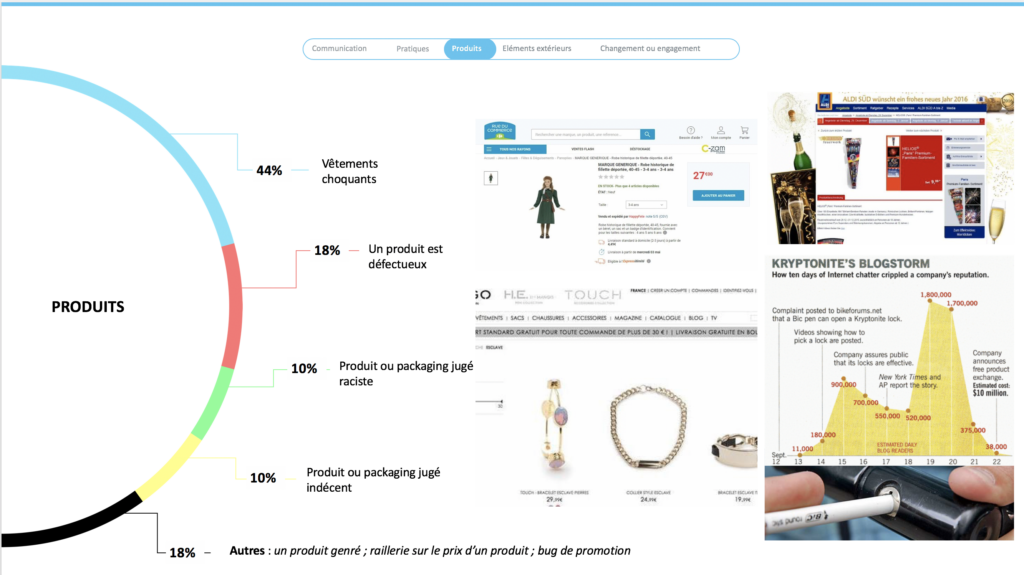
Shocking clothes. Costumes "of deported children" were posted online on Rue du Commerce's website, immediately provoking outrage from internet users.

A defective product. The company Kryptonite, specializing in bicycle locks, faced complaints when a customer randomly opened their lock using a pen.
This customer tried in vain to alert the company, which didn't respond. Frustrated, he eventually posted the video on YouTube. Kryptonite had to recall all its products and went bankrupt a few months later.

A product or packaging considered racist. Mango posted slave-style jewelry on its website. This was apparently a translation error, as "esclava" can mean either "slave" or "bracelet."

A product or packaging deemed indecent. Towards the end of the year, in Germany, Aldi offered fireworks named "Paris." This quickly triggered a backlash, and many German media outlets expressed their shock. The brand shared its surprise at the wave of comments, explaining that the fireworks had been on sale since February, long before the attacks.

Other cases include: gendered products - ridicule over product pricing - promotional bug.
4. External elements
The fourth block represents external elements causing the organization to face a digital crisis.
A campaign led by an NGO. Greenpeace led a full-blown campaign against Nestlé over the use of palm oil in its chocolate. Nestlé tried to censor the video, but this only fueled public discontent. Nestlé eventually surrendered.
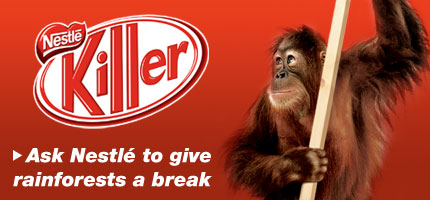
Algorithm unprepared for an unusual situation. During the earthquake in Japan, French citizens there expressed their urgent desire to return to France by contacting Air France on Twitter and Facebook. Despite these messages, ticket prices remained high, even more so than those of competitors. The company didn't respond on social media either, as it was a Sunday.
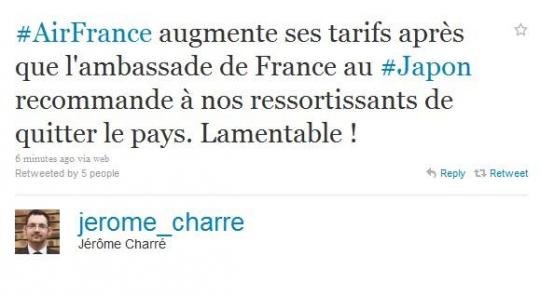
Technical issue. A tweet about a Bible being sold as "fiction" caused a stir, particularly in the USA's deeply religious culture. The brand apologized, stating it was a labeling error affecting only a portion of the lots. They committed to withdrawing and re-labeling the items.

Other cases include: behavior of an external individual attributed to the organization - industrial accident - suppliers with bad practices - breakdown - death of a child - sectoral crisis - bot attack - disinformation.
5. Change or commitment
This last block occurs when a change or commitment by an organization triggers a digital crisis.
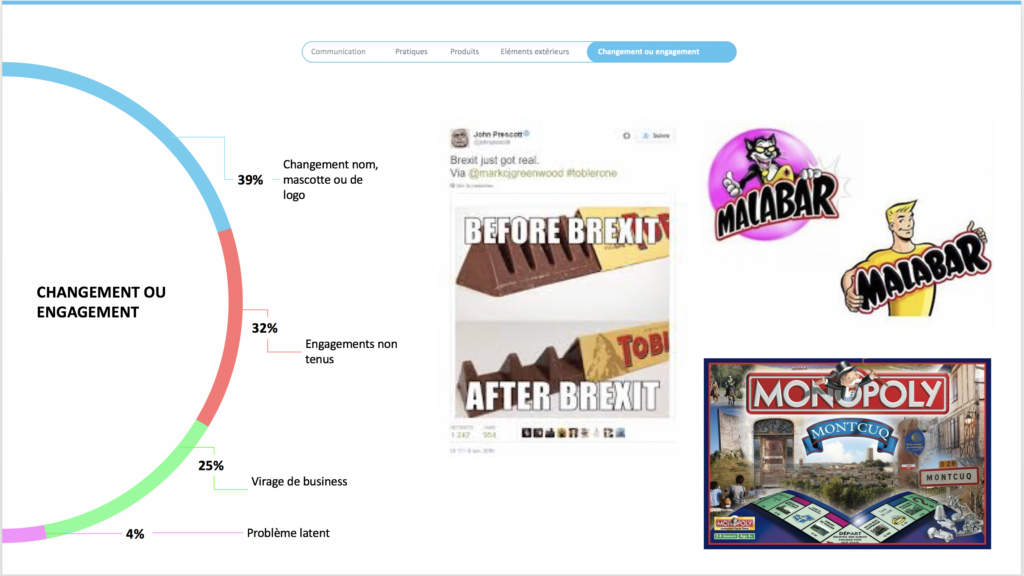
Name, mascot, or logo change. Malabar decided to retire its yellow-shirted mascot and replace it with a stray cat. The nostalgia of internet users soon led to a crisis that forced the brand to backtrack.
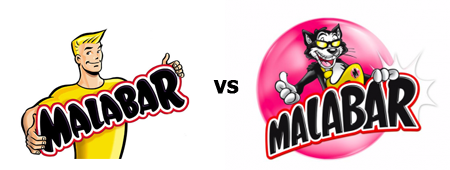
Unmet commitments. Monopoly organized a vote to decide which cities would be featured on the game board. Despite Montcuq's victory, Monopoly refused to include it.

Business pivot. Toblerone, to avoid raising the price of its chocolate, chose to reduce the amount of chocolate. This reduction was mocked on social media, generating more than 400,000 tweets.

Latent issue. A latent issue is one that remains unresolved over time but eventually erupts.
Conclusion

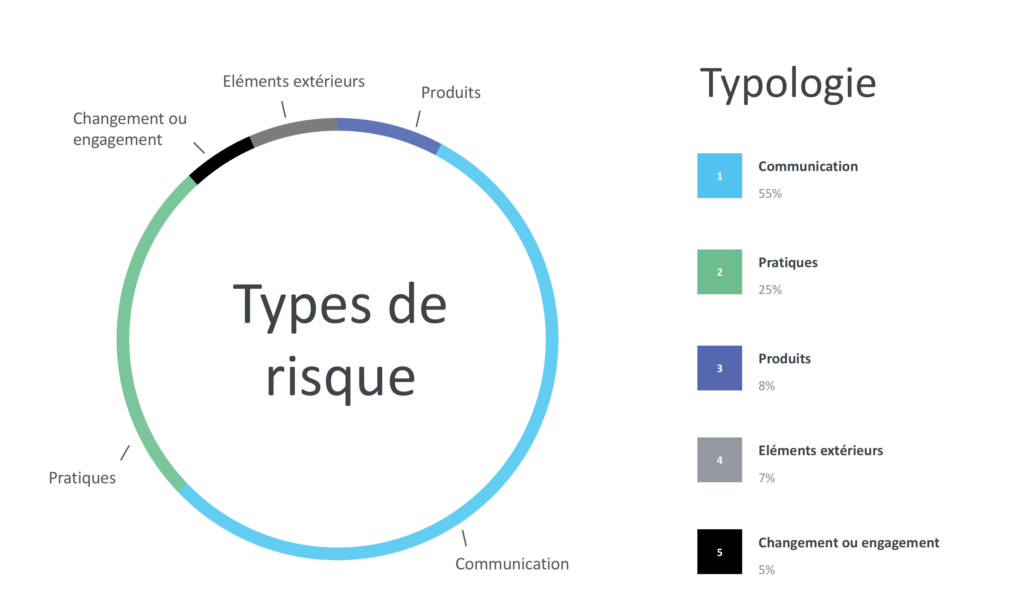
This allows us to classify the different types of crises. With these 65 possible risks, we have covered all imaginable possibilities.
However, we must always remember that unpredictable and unimaginable cases can still occur.
Indeed, we have seen the emergence of fake news in digital crises. For example, Vinci had a fake press release, and FisherPrice had a fake toy circulating on social media
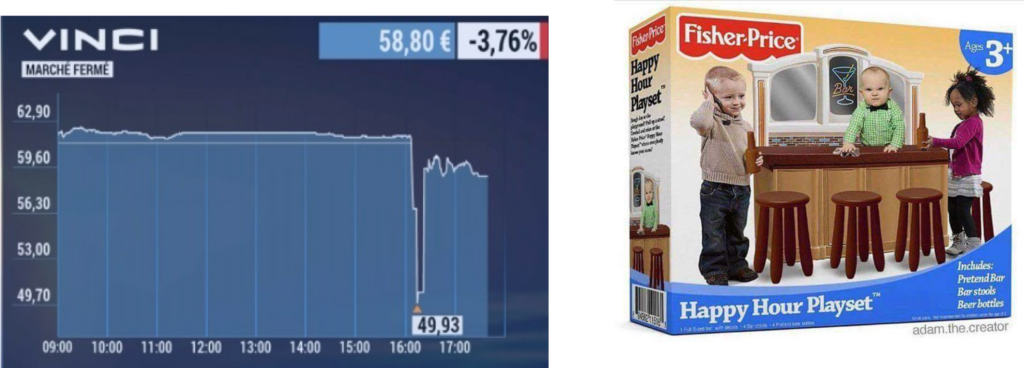
This reminds us that true crises are those that are unpredictable, unimaginable, and unforeseen!
Photo credit: Shutterstock




